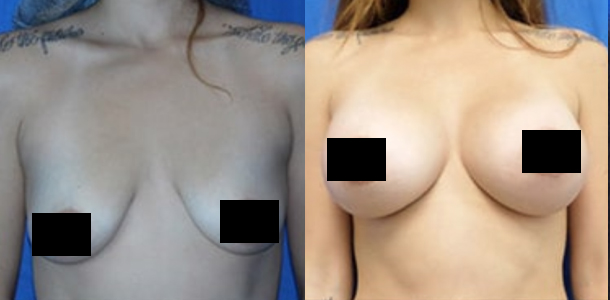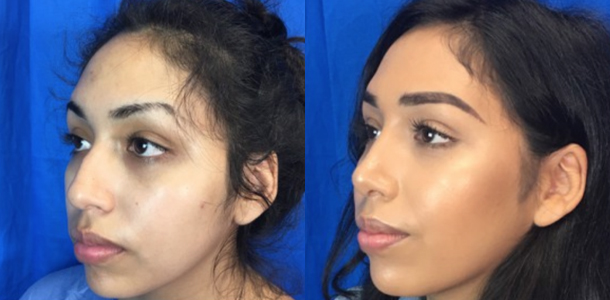Lap Band Adjustment
Consultations offered at our three convenient locations in Pomona, Rancho Cucamonga and Apple Valley, CA
Lap band adjustment is an in-office bariatric procedure for patients who already have a laparoscopic band but need to loosen or tighten the band. A lap band adjustment is a fast and effective procedure with a goal; to prolong the efficacy of this device so patients can eat about four ounces of food per meal and not get hungry for several hours afterwards.
Adjustable gastric bands (AGB) are used to limit the amount of food you eat so you can achieve long-term weight loss. Laparoscopic band surgery is a less-invasive weight loss option compared to a gastric sleeve or bypass, as it does not involve any large incisions or stapling of the stomach or the small bowel. Studies have found the lap band to be an effective way to induce weight loss and improve comorbid conditions such as diabetes, hypertension, and sleep apnea. (1)
At Pacific Med Health Group, we understand that weight loss is challenging. If you have undergone lap band surgery, you have already shown that you are committed to changing your lifestyle and long-term health goals. With a simple lap band adjustment, you can continue your weight-loss journey unimpeded! Dr. Lee Au is a board-certified general surgeon who has over twelve years of experience in providing his patients relief from weight-related issues in Los Angeles and San Bernardino County. Visit one of our two locations in Pomona. For all inquiries, call (800) 555-5551 or fill out a quick contact form to book a personal consultation about your lap band adjustment today.
Contents
How Does a Lap Band Work?
Clinical trials show that a lap band controls a patient’s appetite. (2)Laparoscopic surgery allows a surgeon to place the gastric band precisely using special tools, without making large incisions. The surgeon places the band just below the lower esophageal sphincter (the valve that separates the esophagus and the top of the stomach). A tube connects it to a special port that stays under the skin and fat, usually in the upper abdomen.
Picture the image of an inflated water wing on an arm, and you’re getting close to visualizing how a lap band works. Now imagine you could alter the water wing’s pressure on the arm by adding or removing fluid. With the correct adjustments, that’s exactly what a lap band does. It puts pressure on the nerve endings in the upper stomach to make them think the organ is more full than it actually is. These adjustments involve the doctor placing saline into the port, which controls the tightness of the band. Patients who receive regular adjustments of this fluid achieve the desired amount of restriction, which results in significant weight loss.
When Do I Need a Lap Band Adjustment?
You may need a lap band adjustment in the following situations.
- You don’t feel satiety for long enough after meals
- You don’t lose enough weight in a given time period
- You experience nausea or vomiting
- You have frequent reflux
- You suffer from abdominal pain
- You cannot restrict solid food as required
The ideal weight loss rate for patients with a lap band is 0.5-1.0kg (1.1-2.2lb) per week in the first year, and the ideal portion size is about the size of your palm, or 4 ounces, of solid food per meal. (3)
Issues With Laparoscopic Bands
After weight-loss surgery such as a lap band placement, it can take some time for the body to adjust to its new status. Additionally, certain issues can occur that prevent it from working as intended, which may cause discomfort, insufficient food restriction, and more serious complications. Below are some issues patients may face after their lap band is placed.
- Band Slippage – Band slippage is the term given to a common condition where the band moves from its intended position, causing prolapse of the stomach either above or below the band’s location. (1) Because the band’s placement has shifted, it no-longer works as an effective weight-loss tool. In this case, Dr. Au may empty the band, and/or possibly remove the band.
- Acid Reflux & Heartburn – Acid reflux occurs when the valve that separates the stomach and the esophagus relaxes at the wrong time. As a result, your esophagus is exposed to the harsh acids in your stomach, which causes a persistent and uncomfortable burning. Heartburn is a symptom of reflux that presents as a burning in the chest rather than the esophagus. After a lap band surgery, patients may experience more frequent acid reflux and/or heartburn, but with appropriate adjustments, these symptoms can be minimized.
- Port/Tube Malfunction – If there’s a physical issue related to your port or the tube that extends from it to the band itself, you will need a lap band revision.
- Band Erosion – Rarely, your lap band can weaken stomach tissue and cause perforation. This is a serious condition that needs to be addressed immediately.
- Infection – In some cases, the port may become infected. Symptoms include redness, pain, and swelling. (3) If infection arises seek prompt medical attention to avoid potentially serious complications.
If you are experiencing any of these symptoms, trust Dr. Au to perform a bariatric procedure to alleviate them. Get in touch with any of our three Southern California offices by calling (800) 555-5551, or inquire about a procedure online.
Candidates for Lap Band Adjustment
Candidates for a lap band adjustment procedure should already have their lap band placed and be ready for a “fill” or have issues with their lap band that are causing physical and/or digestive discomfort. Schedule a virtual consultation with Dr. Au to address your concerns quickly and effectively!
Personal Consultation
A personal consultation with Dr. Au is an opportunity to explain the issues you’re experiencing with your lap band. During the visit, he may inquire about when it was placed, and ask you to describe your symptoms. After a detailed examination, he will recommend a lap band adjustment, or in some cases, lap band revision or removal.
Lap Band Adjustment Procedure
The decision to adjust your band usually relies heavily on how your weight-loss is progressing, your appetite, and any unwanted side-effects you may be experiencing. At your consultation, Dr. Au will ask you to be open and honest about your eating habits so he can address your problems in the most effective way.
Lap band tightening may be performed when:
- You’re frequently hungry
- You’re seeking food more often
- You’re eating bigger meals (more than 4 ounces)
Lap band loosening may be required when:
- You’re having difficult swallowing
- You have persistent reflux symptoms
- You have nausea or regurgitation
- You have difficulty maintaining good eating habits
Dr. Au will alter the pressure on your stomach by introducing saline to your port. You may find that frequent adjustments are necessary to find the optimal tightness.
After Your Lap Band Adjustment
Once your lap band has been adjusted, Dr. Au instructs his patients to pay close attention to their bodies, how hungry they feel, and if their symptoms improve once the adjustment has taken place. The best advice to those with a lap band regarding food is to always eat a small amount of good food at a slow pace. Also remember, we require 48 hours of liquid and 48 hours of mushy food after each adjustment.
Cost of Lap Band Readjustment in L.A. and San Bernardino County
Every patient’s weight-loss journey is different so the cost of your lap band adjustment depends on your personal circumstances. Verify your insurance here, or call one of our Apple Valley or Pomona offices at (800) 555-5551 for further information.
FAQ
What’s the difference between a lap band and a gastric balloon?
Although they have the same goals, the lap band and the gastric balloon work slightly differently. The bariatric surgery techniques employed are also different. A gastric balloon is the only non-surgical option, as it is fitted without incisions via the esophagus. Laparoscopic surgery is employed to place a lap band; where a gastric balloon affects satiation from inside the stomach by filling it, the lap band works on the outside to tighten the upper stomach causing it to be smaller.
How long does it take to adjust a lap band?
A lap band adjustment is a short in-office procedure that usually takes between 10-15 minutes.
Are there any foods I can’t eat after getting a lap band?
High fat, sugar, and carbohydrate foods are not recommended when you have a lap band. Similarly, high-fiber foods such as corn, celery, and pineapple can be difficult to digest, and may become caught above the band. Speak to your bariatric surgeon about a diet plan that best fits your lifestyle and weight-loss goals.
When is a fluoroscopy needed?
Fluoroscopy (using contrast to see the band, esophagus, and stomach) is recommended at least once a year. Depending on your symptoms, a fluoroscopy can be done at the same time as your adjustment.
References
- Kodner, C., & Hartman, D. R. (2014). Complications of Adjustable Gastric Banding Surgery for Obesity. American Family Physician, 89(10), 813–818. https://www.aafp.org/afp/2014/0515/p813.html
- O’Brien, M.D., P. (2011, September 11). Gastric Banding and the Fine Art of Eating : Bariatric Times. https://bariatrictimes.com/gastric-banding-and-the-fine-art-of-eating/
- Ponce, J. D. MD, FACS (2022). Laparoscopic Gastric Band Adjustments : Bariatric Times. Bariatrictimes.com. https://bariatrictimes.com/laparoscopic-gastric-band-adjustments/



